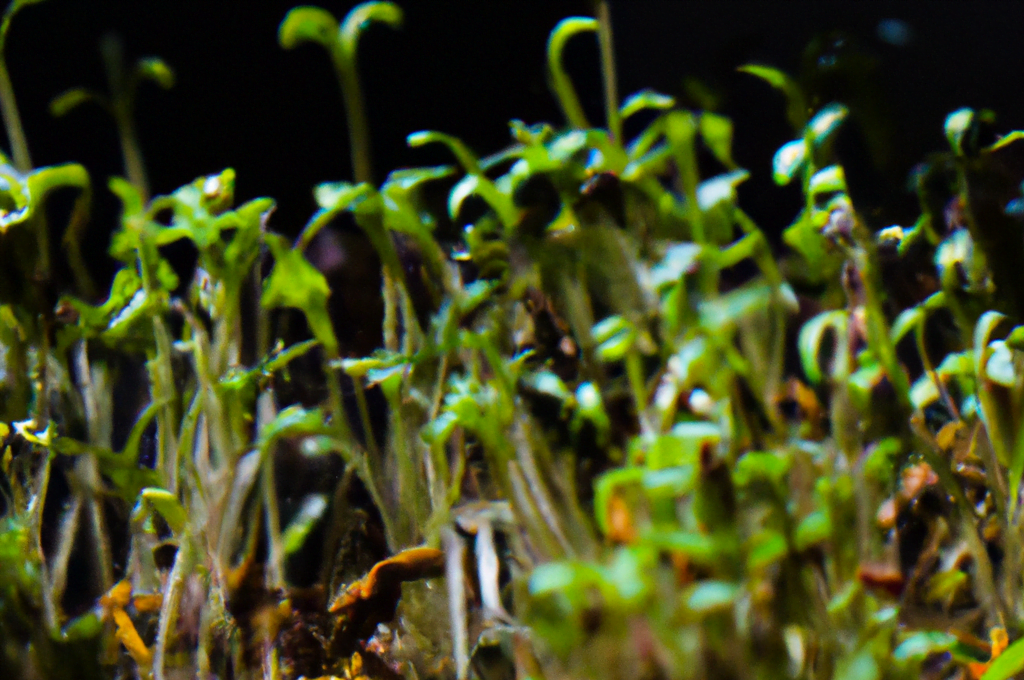Are you looking for a way to boost your health and add some flavor to your meals? Look no further than microgreens!
These tiny plants may be small in size, but they pack a powerful nutritional punch that can help keep you feeling healthy and energized.
Not only are microgreens easy to grow at home, but they also offer unique flavor profiles that can complement any dish or drink.
Plus, unlike sprouts, they are less likely to cause food poisoning.
In this article, we will explore the types and benefits of microgreens, as well as provide tips on how to grow and consume them.
So, get ready to discover the small but mighty benefits of microgreens!
Quick Summary
- Microgreens are small plants harvested at 14 days or younger, and are more nutritionally dense than their mature counterparts.
- They can be grown easily using a variety of methods, including soil and hydroponics, and offer a range of culinary uses, from adding a pop of color to salads and sandwiches to garnishing soups and cocktails.
- Broccoli microgreens have higher concentrations of potassium, calcium, magnesium, iron, and zinc, and can contain up to 40 times more vitamins, minerals, and antioxidants than full-grown counterparts.
- Microgreens are accessible to anyone with extra space in their kitchen, closet, or outdoor garden, and provide a powerful nutritional punch that can help keep you feeling healthy and energized.
What Are Microgreens?
You may already know that microgreens are small plants that are harvested at 14 days or younger and are more nutritionally dense than their mature counterparts. But what exactly are they and how are they grown?
Microgreens are essentially the first set of true leaves of any vegetable plant, and they are harvested at a young age when they are just a few inches tall. They are easy to grow and do not require special lighting, making them accessible to anyone with extra space in their kitchen, closet, or outdoor garden.
Microgreens can be grown using a variety of methods, including soil, hydroponics, and other growing mediums. They can also be grown at a commercial scale, but this can be expensive due to the need for specialized equipment and the high cost of seeds.
Despite this, microgreens are gaining popularity among chefs and home cooks alike for their unique flavors and high nutritional content. So whether you’re looking to add some extra flavor to your dishes or simply want to enjoy the health benefits of microgreens, they’re a great addition to any diet.
How Many Microgreens Are Typically Needed to Equal the Weight of a Potato?
Microgreens are packed with flavor and nutrients, but how many are needed to match a potato’s weight? Potato weights: pounds demystified. On average, a large potato weighs around 0.5 pounds. To reach this weight, you would require approximately 1-2 pounds of microgreens. These petite powerhouses may be small in size, but they certainly make up for it in health benefits and deliciousness.
Nutritional Value
Get more vitamins, minerals, and antioxidants in your diet by incorporating microgreens into your meals. These small but mighty greens are packed with nutrients and offer a variety of health benefits. Studies have shown that microgreens can contain up to 40 times more vitamins, minerals, and antioxidants than their full-grown counterparts.
Broccoli microgreens, for example, have higher concentrations of potassium, calcium, magnesium, iron, and zinc. In addition to their nutritional value, microgreens can also add unique flavors and textures to your dishes. They offer a range of culinary uses, from adding a pop of color to salads and sandwiches, to garnishing soups and cocktails.
Incorporating microgreens into your diet is an easy way to boost your nutritional intake and add some variety to your meals. So why not give them a try and see how they can enhance both your health and your taste buds?
Growing and Consumption Tips
To grow and consume microgreens, start by selecting the type of vegetable you want to harvest and use the same seeds as full-sized plants. Some popular options include arugula, radishes, broccoli, and sunflowers. Once you have your seeds, you can start growing them in a container with potting soil or on a hydroponic system. Make sure to keep the soil moist but not waterlogged and provide enough light for the plants to grow. In as little as one to two weeks, your microgreens will be ready to harvest by snipping them just above the soil line.
To enjoy your microgreens, there are endless recipe possibilities. Try adding them to salads, sandwiches, or smoothies for an extra boost of nutrition and flavor. You can also use them as a garnish for soups or to top off your favorite pizza. Here are some growing techniques and recipe ideas to get you started:
| Growing Techniques | Recipe Ideas |
|---|---|
| Grow in a container with potting soil or on a hydroponic system | Add to omelets or scrambled eggs |
| Keep soil moist but not waterlogged and provide enough light for growth | Use as a topping for avocado toast |
| Harvest after one to two weeks by snipping just above the soil line | Mix into homemade hummus |
| Try different types of seeds such as arugula, radishes, broccoli, and sunflowers | Use as a filling for spring rolls |
With these simple growing techniques and recipe ideas, you can start incorporating microgreens into your diet and reap the benefits of their high nutritional content.
Frequently Asked Questions
Are there any specific types of microgreens that are particularly easy or difficult to grow?
Some microgreens are easier to grow than others. Radish, sunflowers, and pea shoots are among the easiest, while basil and cilantro can be more difficult. The most nutritious microgreens include broccoli, kale, and red cabbage.
Can microgreens be used in cooking or baking, or are they primarily used as garnish?
Yes, microgreens can be used in cooking and baking for added flavor and nutritional value. They can be used in salads, smoothies, sandwiches, and as a garnish. They offer a unique taste and are packed with nutrients, making them a great addition to any dish.
Is there a recommended amount of microgreens to consume daily for optimal health benefits?
For optimal health benefits, aim for 1-2 ounces of microgreens daily. While they offer high nutritional content, consuming too much can lead to potential health risks. Always balance your diet with a variety of foods.
Are there any safety concerns when growing or consuming microgreens?
When growing microgreens, be aware of potential contamination risks, such as using clean soil and water. However, the nutritional benefits outweigh the risks, with up to 40 times more nutrients than mature plants.
How long do microgreens typically last once harvested, and what is the best way to store them?
After harvesting microgreens, store them in a sealed container lined with a paper towel in the fridge. Shelf life ranges from 5-10 days. Preserve freshness, nutrition, flavor, texture, aroma, and appearance. Use in recipes for culinary flair.









